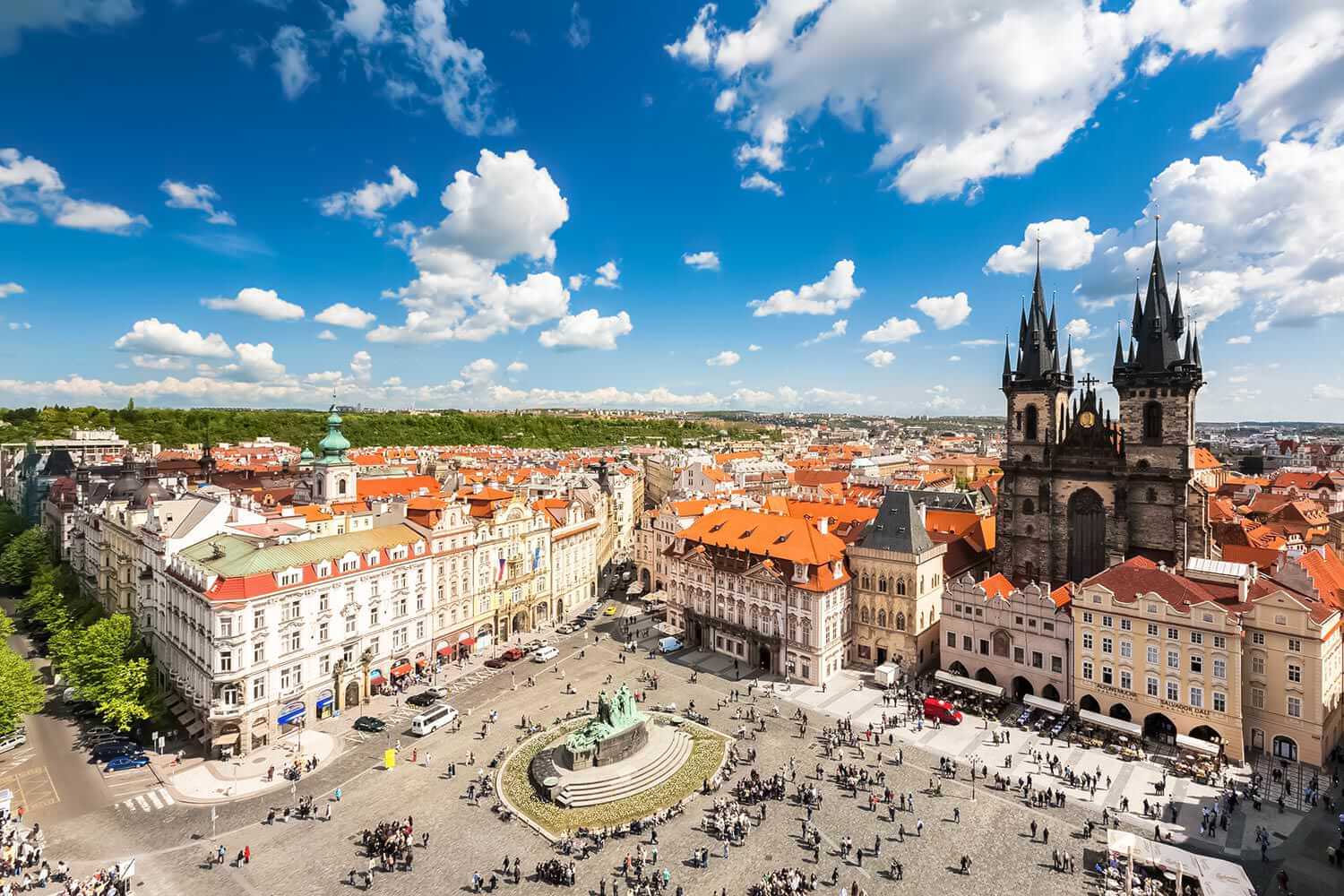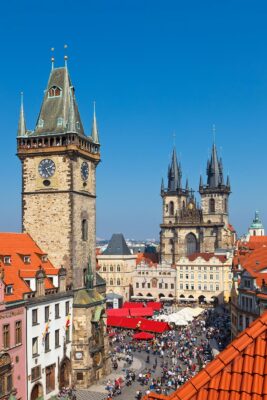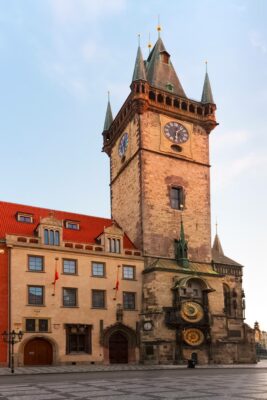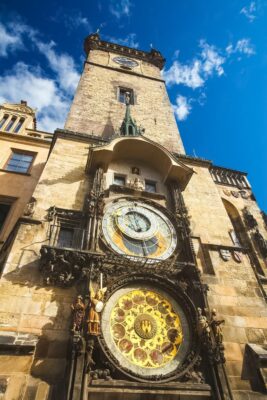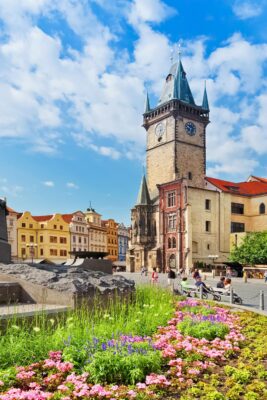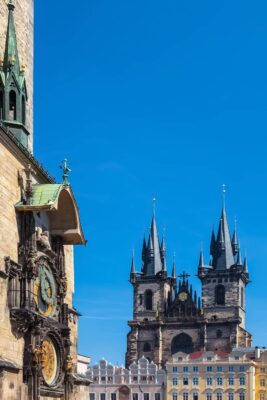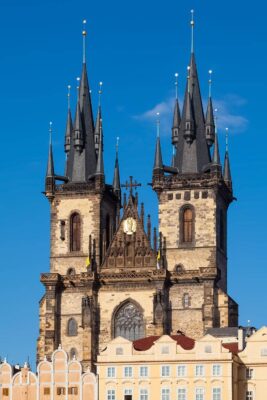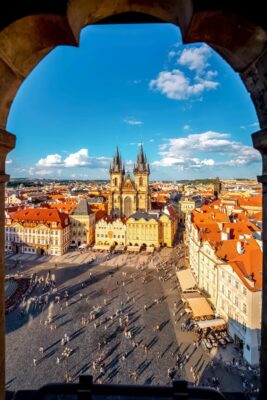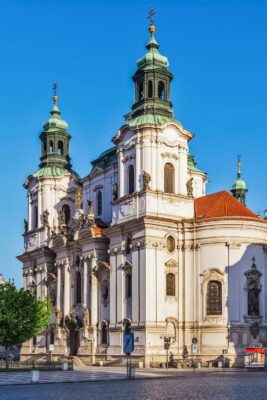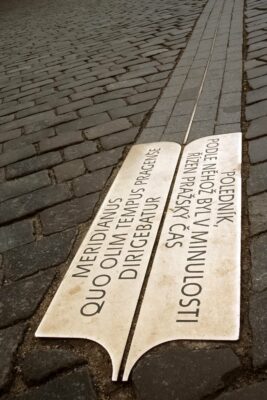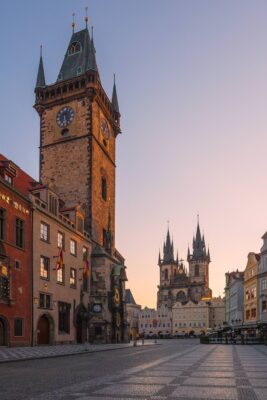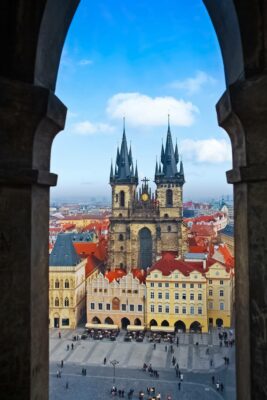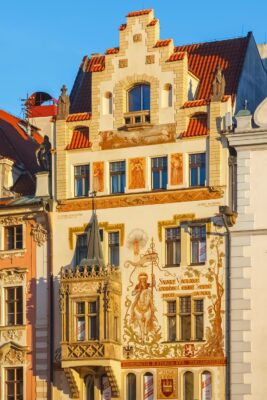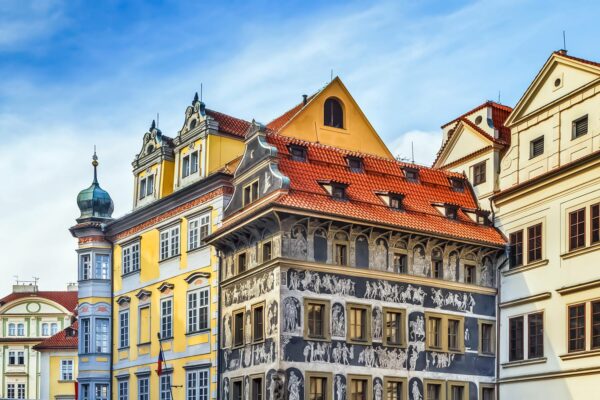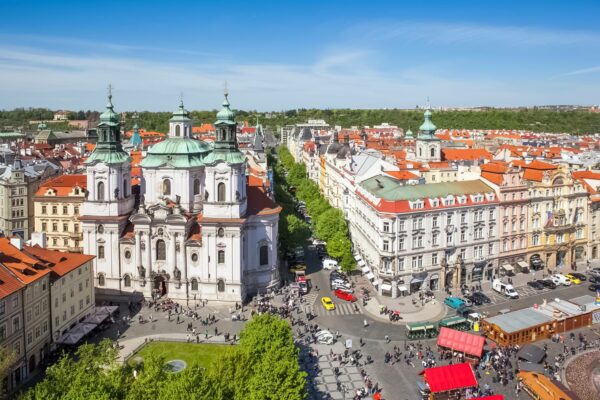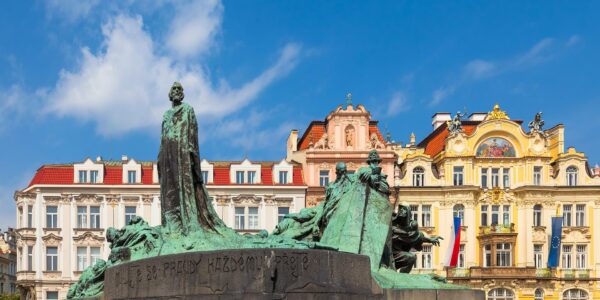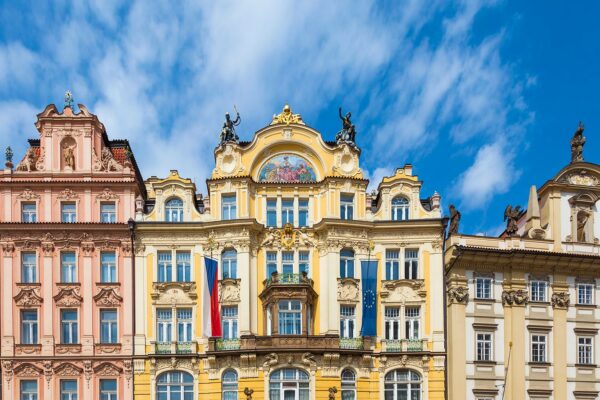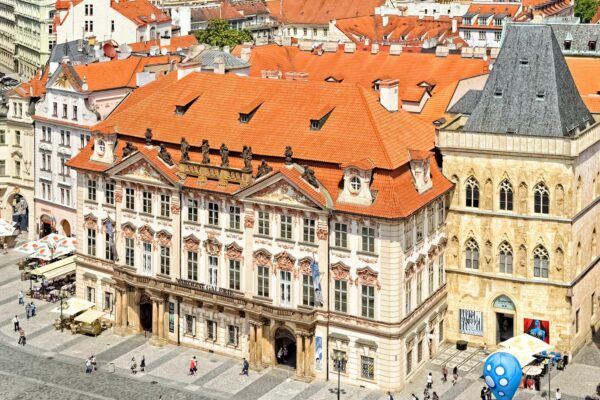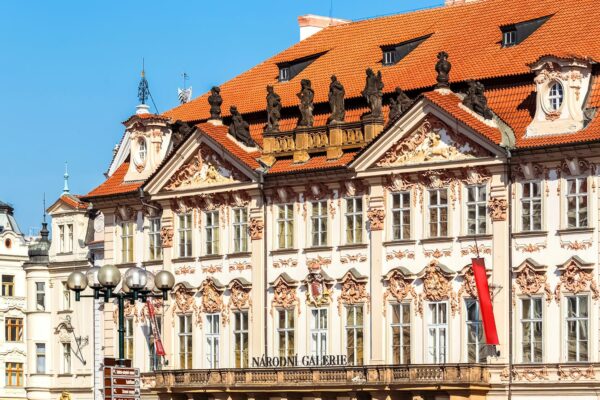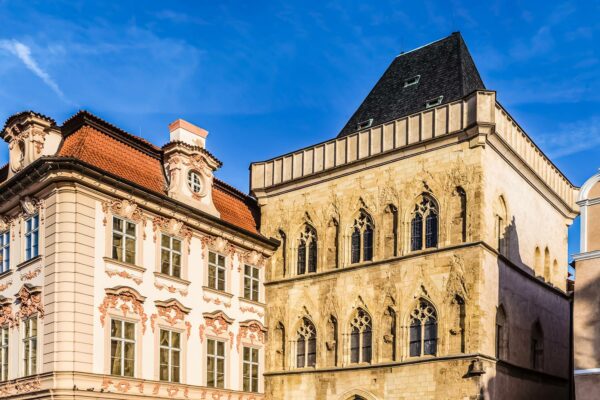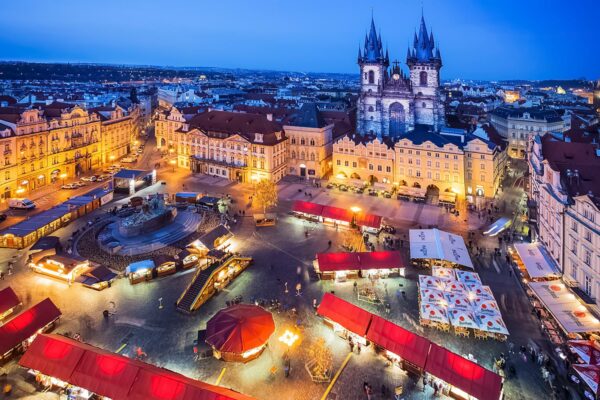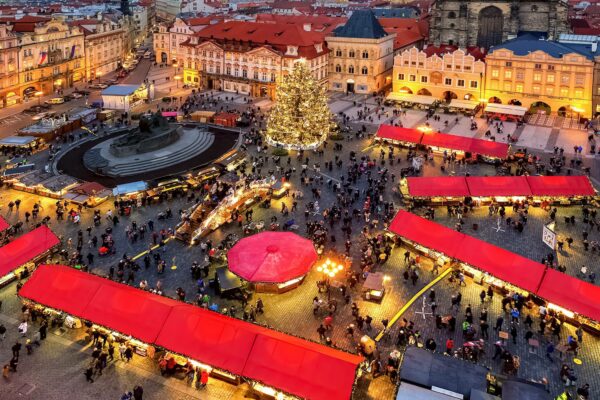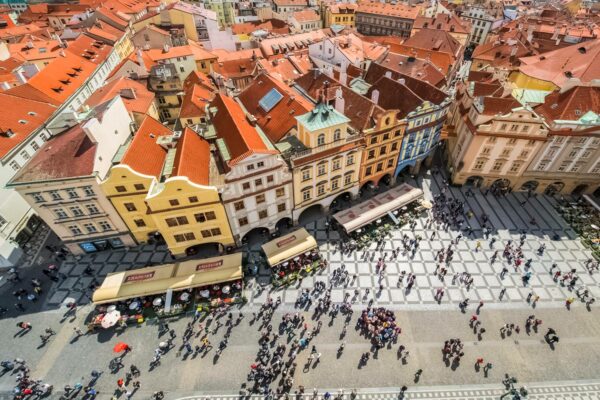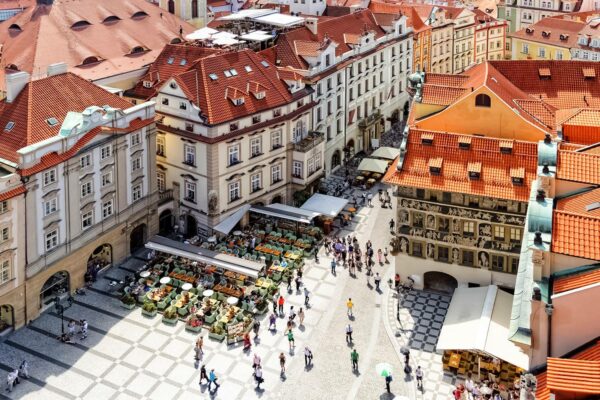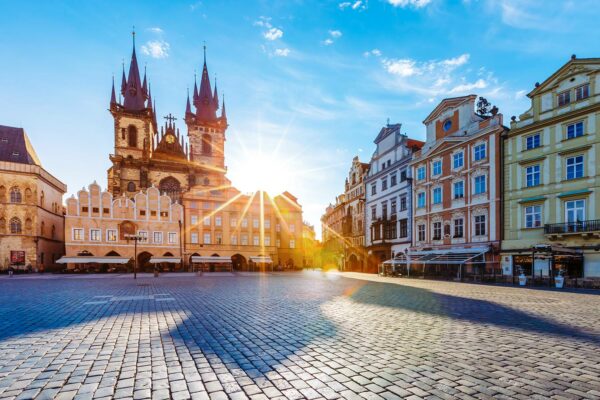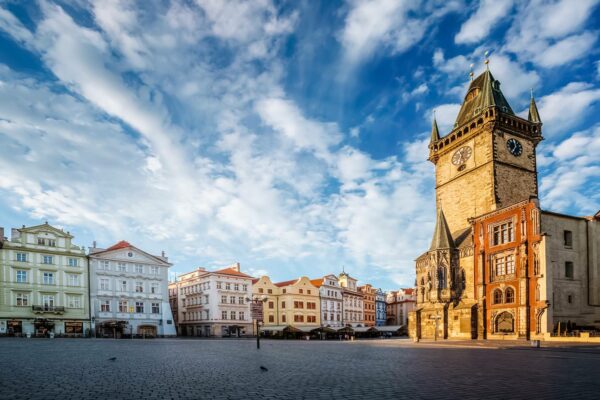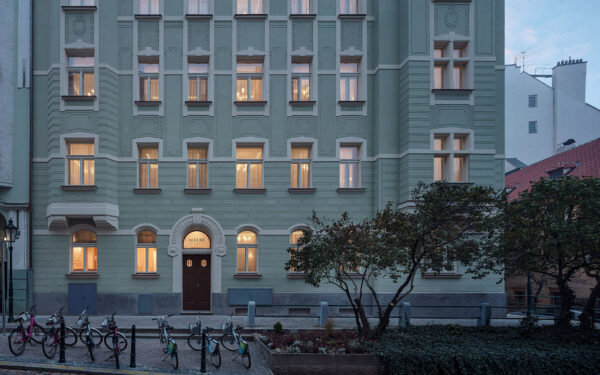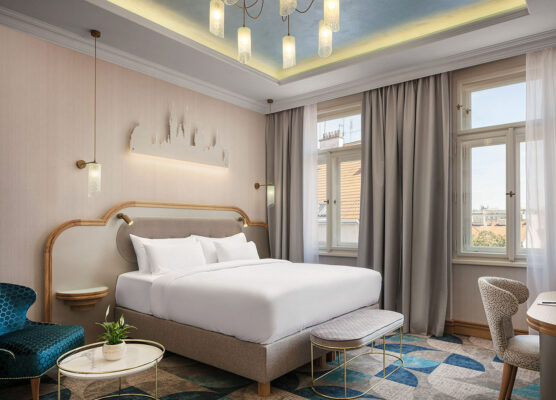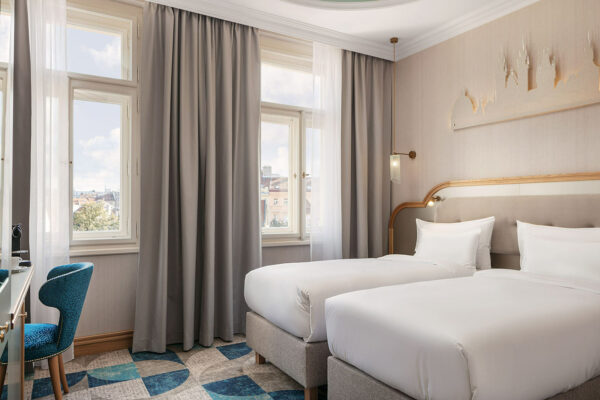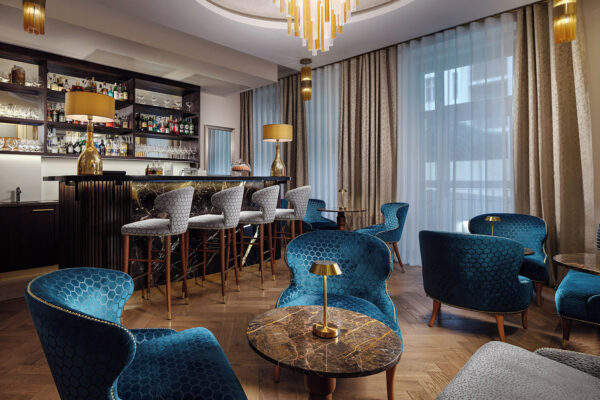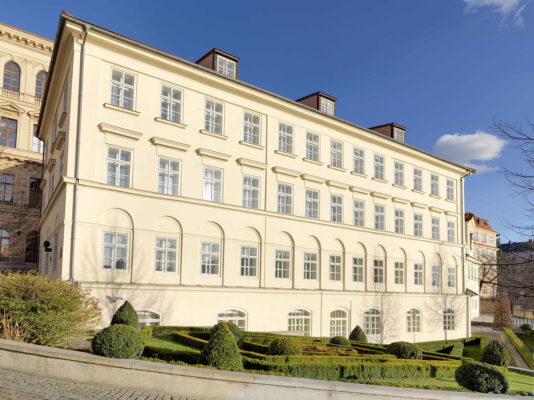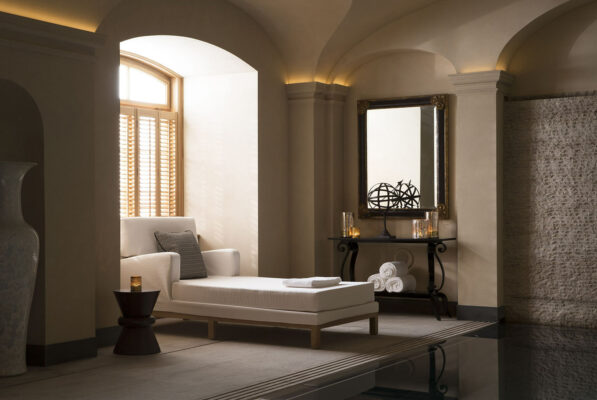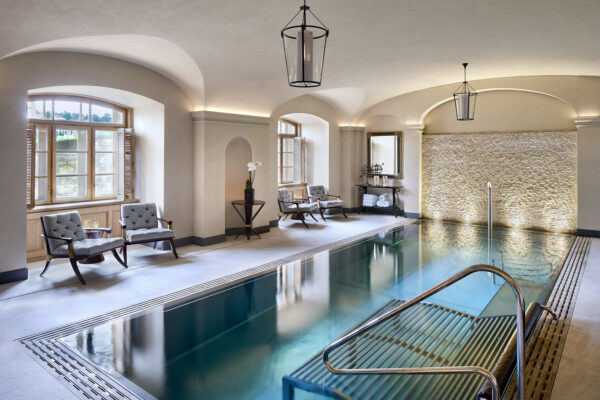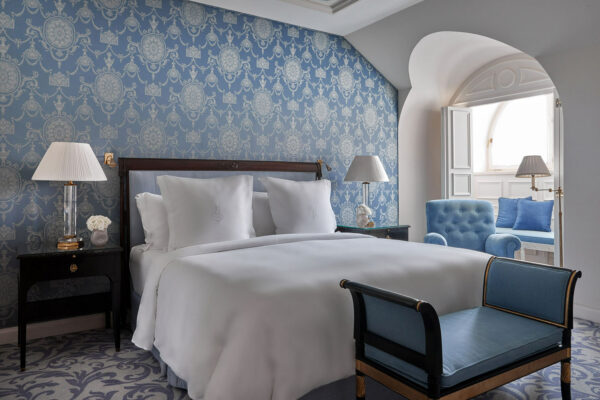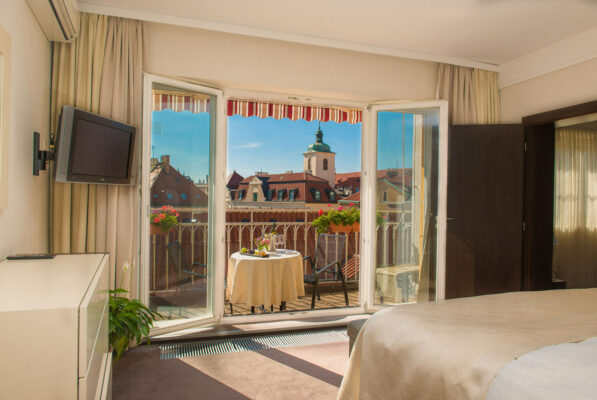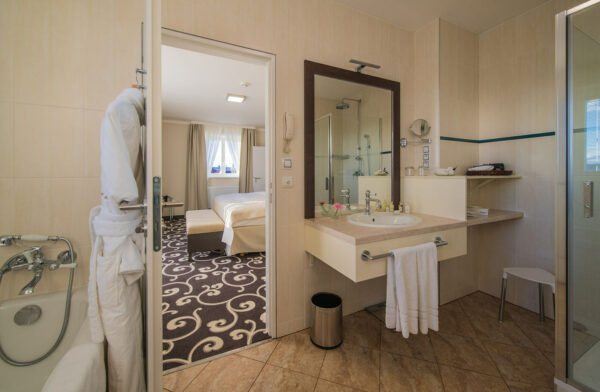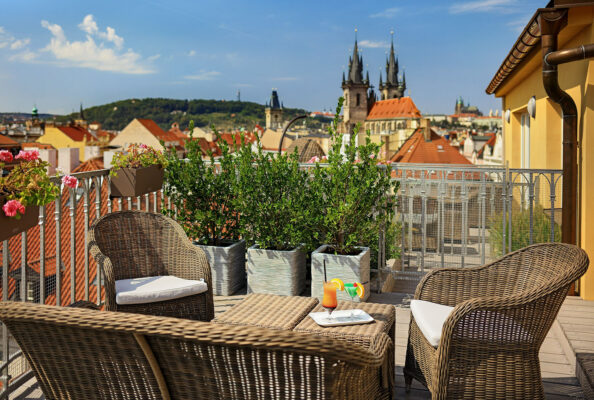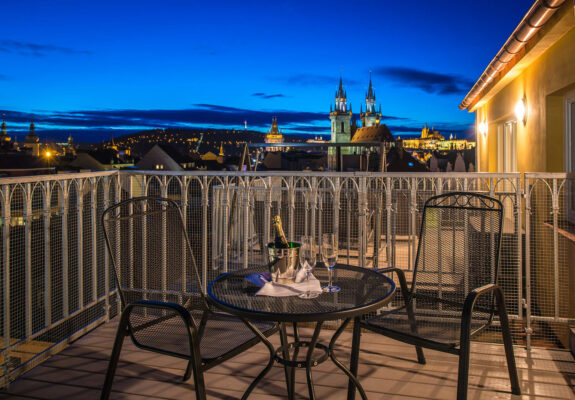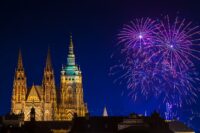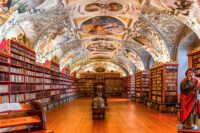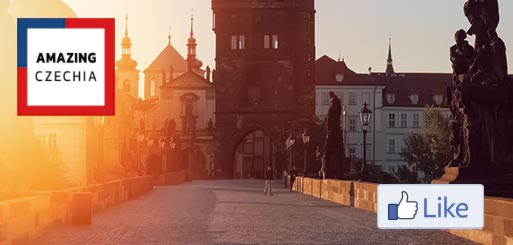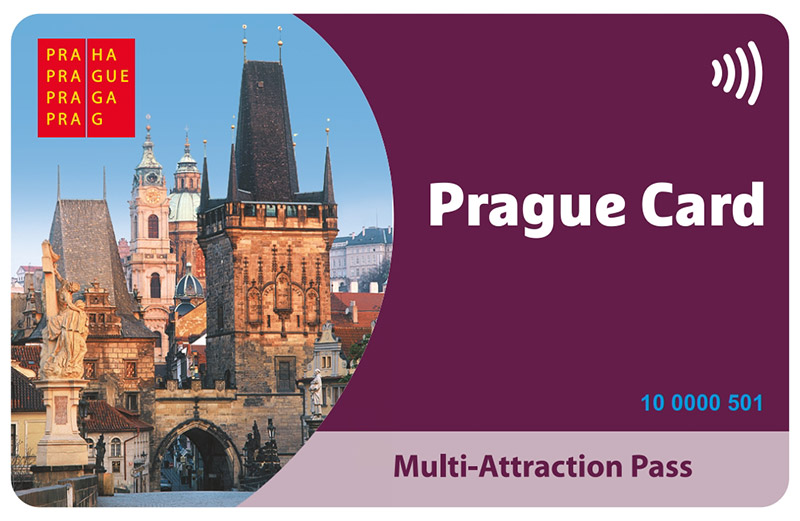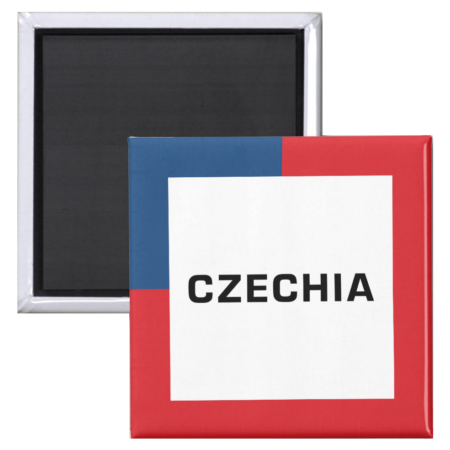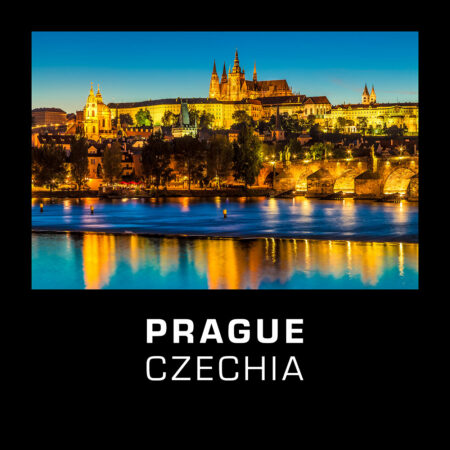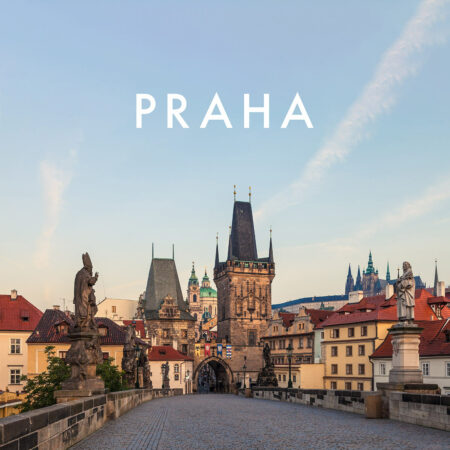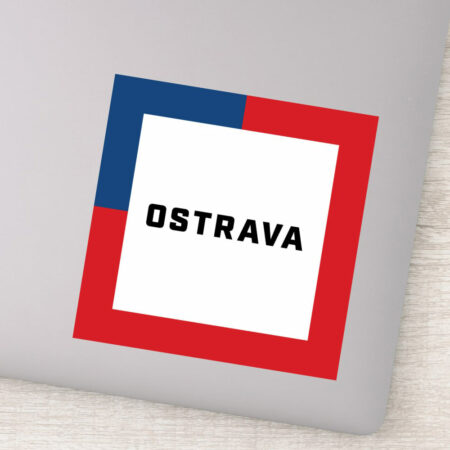Old Town Square, in Czech known as Staroměstské náměstí, is the central square of the historic part of Prague. The square is one of the greatest tourist attractions of the Czech capital, along with Charles Bridge and Prague Castle. It is almost impossible to miss it if you’re coming to Prague as a tourist.
Staroměstské náměstí may seem a bit of a tongue-twister to many English-speakers, and for them, the colloquial name Staromák will be easier to pronounce.
The Main Sights
The absolute highlight of Old Town Square is the famous Prague Astronomical Clock, a.k.a. Orloj. It is a medieval astronomical clock mounted on the Old Town Hall and shows the current position of selected celestial objects. The lower part of the Orloj is a calendar dial and shows the current day on a beautiful dial. To find out more about the Prague Astronomical Clock and how it works, please read this article.
The Old Town Hall itself is a little different from most town halls, in that it is not a single structure but rather a complex of connected medieval buildings. The tower of the Old Town Hall was completed in 1364, and at that time it was the tallest structure in the city. The tower is open to the public and its observation deck offers amazing views of Old Town Square. The opening times and admission fees can be found here.
The cityscape of Old Town Square is dominated by another landmark, which even is not located in the square itself, but very near. The Gothic towers of the Church of Mother of God before Týn (Kostel Matky Boží před Týnem) a.k.a. the Týn Church (Týnský chrám) are visible from all over the square. These iconic towers feature characteristic small spires and belong to the most recognizable Prague landmarks. Even if you have never been to Prague before, you might have seen them many times in photos.
You will find another church in the northwestern corner of Old Town Square. St. Nicholas Church is a Baroque church built in the 18th century. It is the main church of the Czechoslovak Hussite Church. It should not be confused with St. Nicholas Church in the central square of the Lesser Side (Malá Strana), which is a Roman Catholic church.
The Prague Meridian (Pražský poledník) is a line in the cobblestone surface of Old Town Square corresponding to the meridian 14°25'17“E. Nowadays, it has no practical significance, but between 1652 and 1918, it was used to tell the time. More specifically, noon was defined as the moment when the shadow cast by a nearby column fell directly upon this line.
It was a Marian column (Mariánský sloup), erected there in 1652, as thanks for the successful defence of the city during a siege in the Thirty Years’ War. The Marian column was viewed as a symbol of Habsburg (Austrian) rule and was dismantled in independent Czechoslovakia in 1918. There is currently a movement aiming to restore the column.
Without the column, the Prague Meridian obviously cannot serve its original purpose, as the shadow no longer falls upon it. There is a small metal plaque in the cobblestone pavement commemorating the meridian and the so-called “Prague time”.
The House at the Minute (Dům U Minuty) with its beautiful sgrafitto facade is located next the Old Town Hall complex. The famous writer Franz Kafka lived in this house with his family at the end of the 19th century. Its address is Staroměstské náměstí 2.
Another impressive townhouse in Old Town Square is the Štorch House (Štorchův dům), also known as At the Stone Virgin Mary (U Kamenné Panny Marie). It was built at the end of the 19th century in the Neo-Gothic style. The Štorch House stands out from the adjacent buildings thanks to its Gothic bay window and the beautiful painted facade. Among other motifs, the frescos depict the Czech patron St. Wenceslas. The Štorch House is located next to Celetná Street and it has the number 16.
Near the northeastern corner of the square, you will see the Jan Hus Memorial (Pomník mistra Jana Husa). Jan Hus was a Czech church reformer executed in 1415. His teachings had a profound influence on the history of the Czech nation.
Jan Hus’s contribution to the development of the Czech literary language was the introduction of diacritical marks, such as: č, š, ř, ž, á, í, é. The purpose of this innovation was representing each sound by only one symbol and eleminating digraphs (sounds represented by two letters).
The inscription on the monument reads “Milujte se, pravdy každému přejte”, which means more or less: “Love one another, wish the truth to everyone”. This is a shortened version of a quote from one of Hus’s letters from prison. The day of his execution, July 6th, is a public holiday in Czechia (Jan Hus Day).
The Kinský Palace (Palác Kinských) is one of the largest and most impressive buildings on Old Town Square. The word “palace” is no exaggeration at all. It was built in the Rococo style in the mid-18th century. The palace was in the possession of the aristocratic Kinský family for some time, and hence the name.
In 1948, Klement Gottwald announced from balcony of the Kinský Palace the beginning of communism in Czechoslovakia. 42 years later, Václav Havel announced the end of communism in the country standing in the same place.
Nowadays, the palace is one of several buildings housing the National Gallery in Prague. It is a state-owned art gallery and a cultural institution with one of the largest art collections in Central Europe.
The Stone Bell House (Dům U Kamenného zvonu) is located next to the Kinský Palace. It was probably built in the first half of the 14th century and was used as a temporary royal residence by Elizabeth and John of Bohemia, the parents of the Holy Roman Emperor Charles IV.
As most buildings from that era, the Stone Bell House was originally Gothic, but later reconstructions substantially changed the appearance of its exterior. Between 1975 and 1987, the house underwent restoration in the Gothic Revival style. The results of this work are quite impressive and very few people will suspect that the exterior is essentially a 20th century product.
The house owes its name to the bell that is embedded into a corner of the facade. The bell is partially visible from the outside and obviously, it will never ring.
Christmas and Easter Markets in Old Town Square
Christmas and Easter markets in Prague belong to the most popular markets of their kind in Europe. There are multiple locations of Easter and Christmas markets in Prague. The ones in Old Town Square and Wenceslas Square are the largest and attract most visitors.
There are no fixed start and end dates of these markets. Christmas markets usually start at the end of November or beginning of December and are usually open until early January. The start and end dates of Prague Easter markets depend on the Easter date in a given year. The Easter markets often start about two weeks before Easter and close one week after Easter.
Getting There
The nearest underground station is Staroměstská, on the line A. Tram lines: 2, 13, 14, 17, 18 and 93 also stop there. Closer to the square is the bus stop of the same name (Staroměstské náměstí), where the bus line 194 stops.
The underground stations Můstek and Náměstí Republiky (Line B) are also within walking distance of Old Town Square.
Interesting Places Near Old Town Square
The Powder Gate (Prašná brána) is a Gothic tower serving in the past as a gate and separating the Old Town from the New Town. You can climb the tower and the reward will be stunning views of the Golden City. You will be able to see the Týn Church, the Petřín Lookout Tower and Prague Castle. The opening times can be found here.
The Municipal House (Obecní dům) is a masterpiece of Art Nouveau architecture. There used to be a royal palace of Bohemian kings on its site, but it dilapidated and was demolished at the beginning of the 20th century. Municipal House is used for civic functions. There is a concert hall, several restaurants and cafes inside. The building’s interior is even more impressive than its exterior, and visitors can even book guided tours.
The Powder Gate and the Municipal House are connected with Old Town Square via Celetná Street.
Charles Bridge (Karlův most) is within a few minutes’ walk away. This famous landmark needs no introduction. If you’d like to read a little more about and see it in great photos, please click here.
The Royal Route (Královská cesta) is the route taken in the past by Czech / Bohemian kings and queens before their coronation in St. Vitus Cathedral at Prague Castle. The Royal Route started at Republic Square (Náměstí Republiky), next to the Powder Gate. From there, the coronation procession went to Old Town Square via Celetná Street. It continued to Prague Castle by way of Charles Bridge, Lesser Side Square and Nerudova Street.


